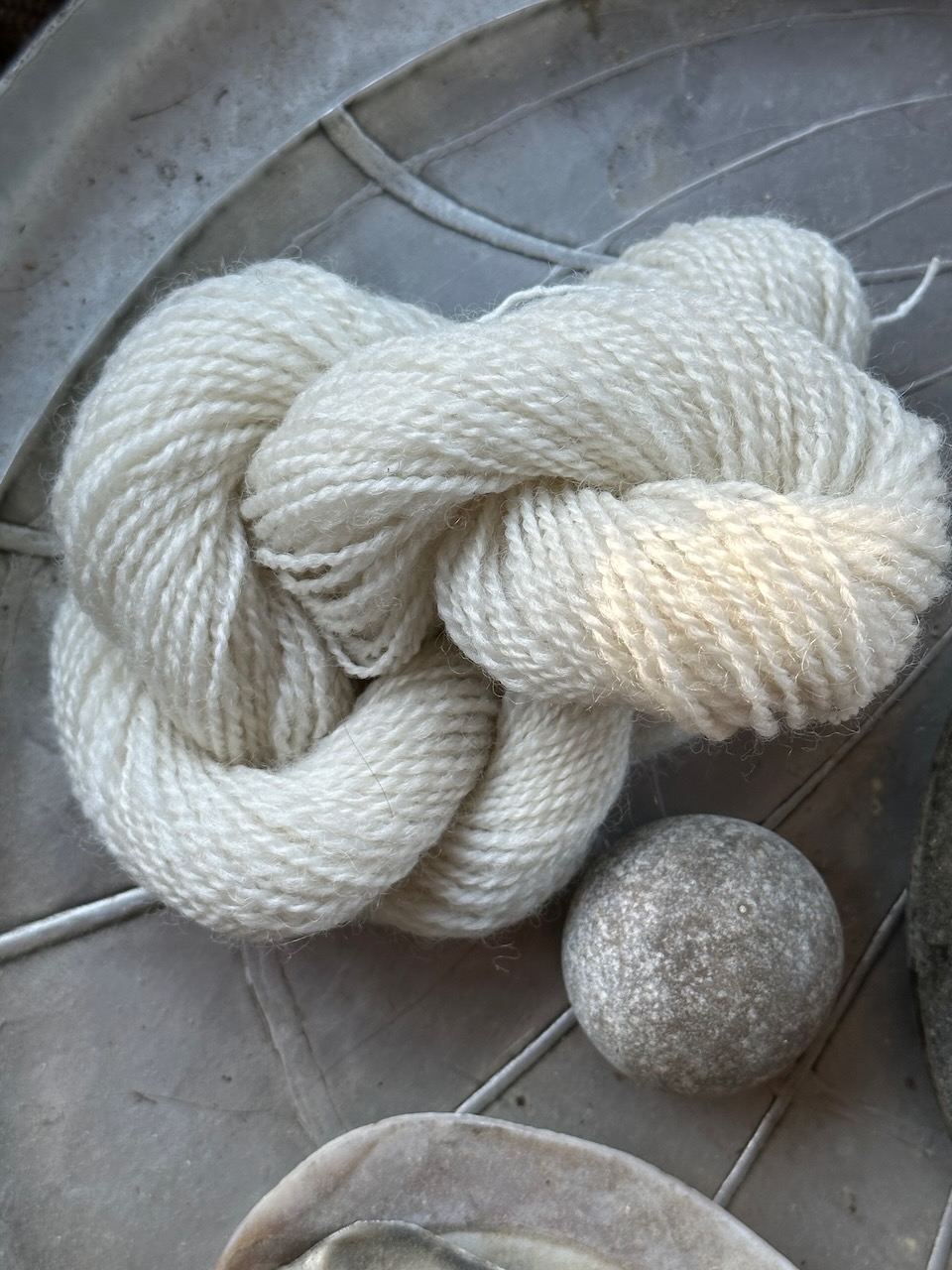Refining
My last post was a long time ago (two Novembers ago) and rereading it just now I had to chuckle at myself a little bit: the 12-16 fleeces I was mildly concerned about have now multiplied through two more shearing seasons. Almost all of them went to the mill to be washed and carded, but I saved that special brown lamb fleece, thinking I’d card it myself. It joined a few other fleeces in my studio that I’d kept to process by hand: a Shetland fleece and an Icelandic fleece from a friend’s flock in Michigan (each with a remarkably fluffy undercoat mixed with long guard hairs), and some locks from Edna and Lucy, the original ewes from my neighbor’s flock.
This winter, I received a treasured and useful gift: a pair of wool combs, which opened up an entirely different approach to fiber preparation. While carding wool (by hand or machine) keeps almost all of the fibers mixed together in a big, fluffy mass, using combs creates a much more highly organized preparation. As you comb, each pass pulls out the longer fibers and aligns them, separating them from the shorter bits. Perhaps a bit fancifully, I would observe that the entropy of the wool is reduced: the fleece has been sorted into two sets, based on the length of the individual fiber, and the combed fiber is highly uniform in texture and alignment. I’ve added informational energy to the system through the work of combing, and that energy comes back to me in the form of functional differentiation: the two preparations are useful for very different things.
I wasn’t quite prepared for how much of a difference combing would make. I’ve been combing the locks I set aside from Edna’s and Lucy’s fleeces, which are long and lustrous (from their Blue-Faced Leicester heritage) and also finely crimped (from their Cormo side), and the results are a revelation. The yarn has an almost pearly glow, and is somehow both silky and lofty. Even with my semi-competent spinning, it looks like a luxury product.

If you discarded (interesting word! but turns out to have no connection if the OED is correct) the residue from the combing process, that skein would be luxurious indeed. But I’m holding to my expectation that the short fibers have an optimal purpose too: for instance, to produce felt, or carded wool for spinning fuzzy yarn, or to stuff a pillow.